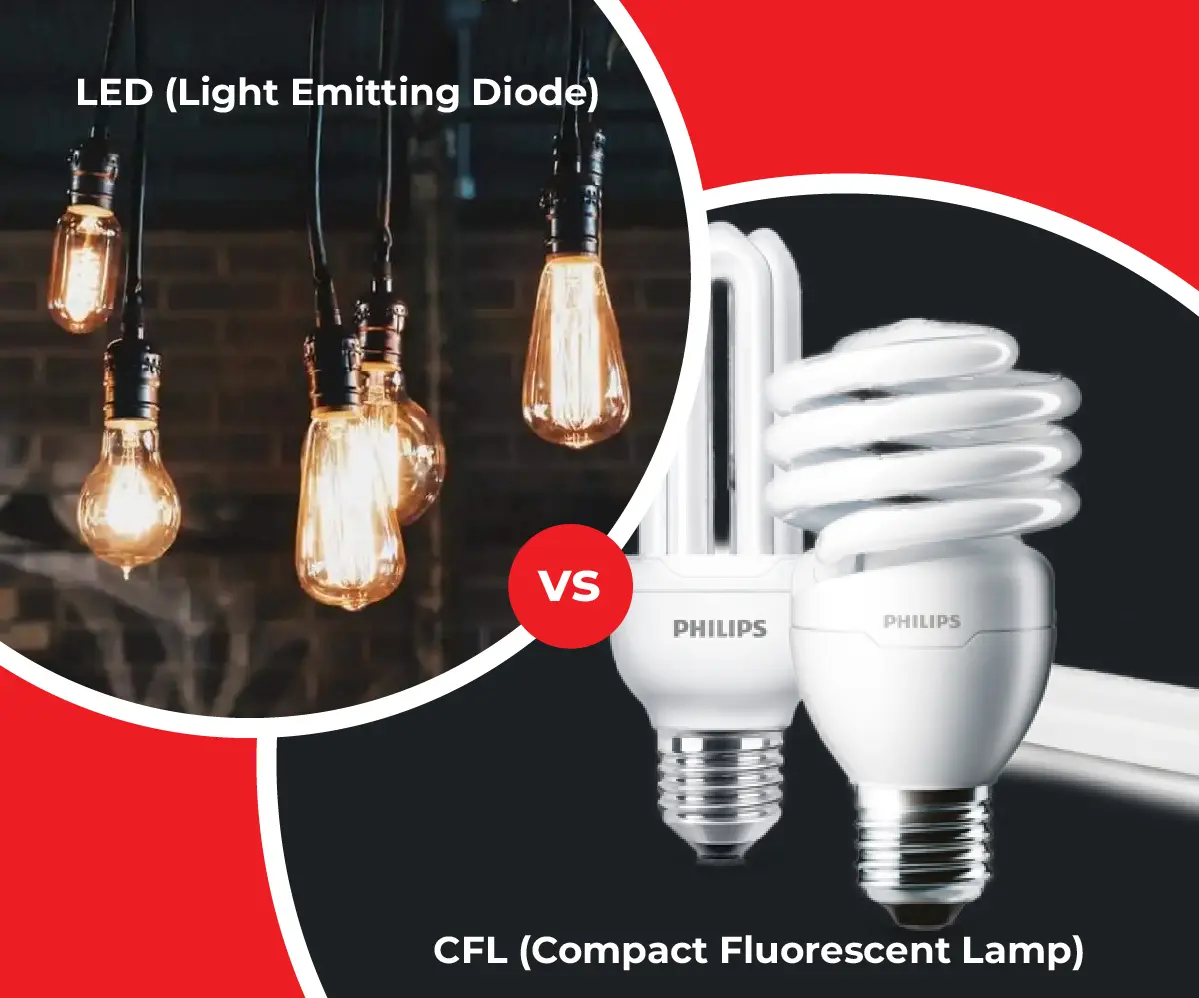Lighting is a part of our life in the home and office, which influences energy consumption, mood, and expense. Between the energy-saving alternatives available, the choice typically boils down to LED and CFL bulbs. Though both were designed as alternatives to standard incandescent lighting, they are like worlds apart in terms of performance, life, and environmental impact. Let us discover which one is the best choice for you.
Knowings LED and CFL Technology
LED (Light Emitting Diode): Leverages semiconductor technology to produce light in an extremely efficient manner with little heat.
CFL (Compact Fluorescent Lamp): Deploys a gas-filled tube, which is lit once an electric current stimulates the phosphor coating as well as the gas.
Both alternatives deliver considerable energy reduction as opposed to incandescent bulbs, yet LEDs have taken center stage due to their greater efficiency and versatility.
Power Consumption and Efficiency
If electricity bill cost is the concern, LEDs are the winner. LEDs consume 80% less power than incandescent bulbs and have a longer lifespan than CFLs, which consume approximately 70% less power than incandescent. LED lighting thereby decreases overall consumption, which is perfect for long-term savings.
Longevity and Performance
A bulb’s longevity affects its value and convenience. On average:
- LEDs can last between 25,000 to 50,000 hours, minimizing the need for replacement.
- CFLs last for about 8,000 to 10,000 hours, so they expire much earlier than LEDs.
In addition, LEDs are better in different conditions—they work well even at low temperatures, turn on immediately, and are immune to frequent switching, unlike CFLs, which take time to fully light up.
Environmental Impact: Which is Greener
Going for environmentally friendly light reduces damage to the environment. LED light bulbs are mercury-free, completely recyclable, and have a long lifespan, thus creating less waste. CFL light bulbs are mercury-impregnated and require careful disposal to prevent pollution. LEDs are not just low energy consumers but also contribute to reducing a carbon footprint.
Cost Considerations
While CFLs are cheaper up front, they must be replaced constantly and use more energy in the long run. LEDs, which are more expensive to buy in the first instance, save more money in the long term with less energy used and longer lifespan.
LED and CFL FAQs
1. Are LEDs safer than CFLs?
Yes, for the reason that CFLs are toxic with mercury and, if thrown away incorrectly, are environmental hazards. LEDs contain no toxic elements.
2. Are LED bulbs compatible with CFL bulbs in fixtures?
Yes, the majority of LED bulbs will function just fine in standard CFL sockets as long as wattage and base styles are equal.
3. What is the best bulb for workspace lighting?
LEDs can be programmed for adjustable brightness and color, so they’re perfect for productivity areas.
4. Are CFLs a thing of the past when it comes to lighting?
Whereas CFLs were previously a major energy-saving choice, LEDs have taken their position as an improved, efficient, safer, and more durable alternative.
Final Recommendation
For anybody looking for energy efficiency, long life, and the well-being of the environment, LEDs are the option. Although CFLs continue to have a cost benefit over incandescent bulbs, they simply don’t match up to LEDs on all of the most important fronts. Making the switch to LED lighting is about improved light, reduced electricity payments, and a greener planet.

